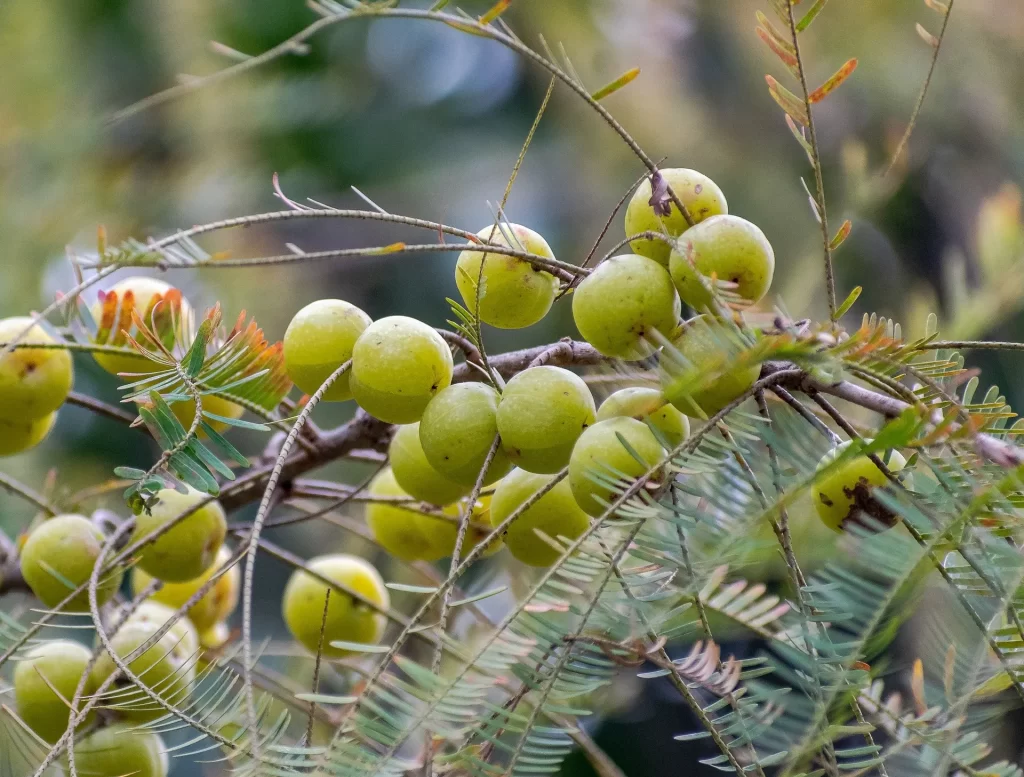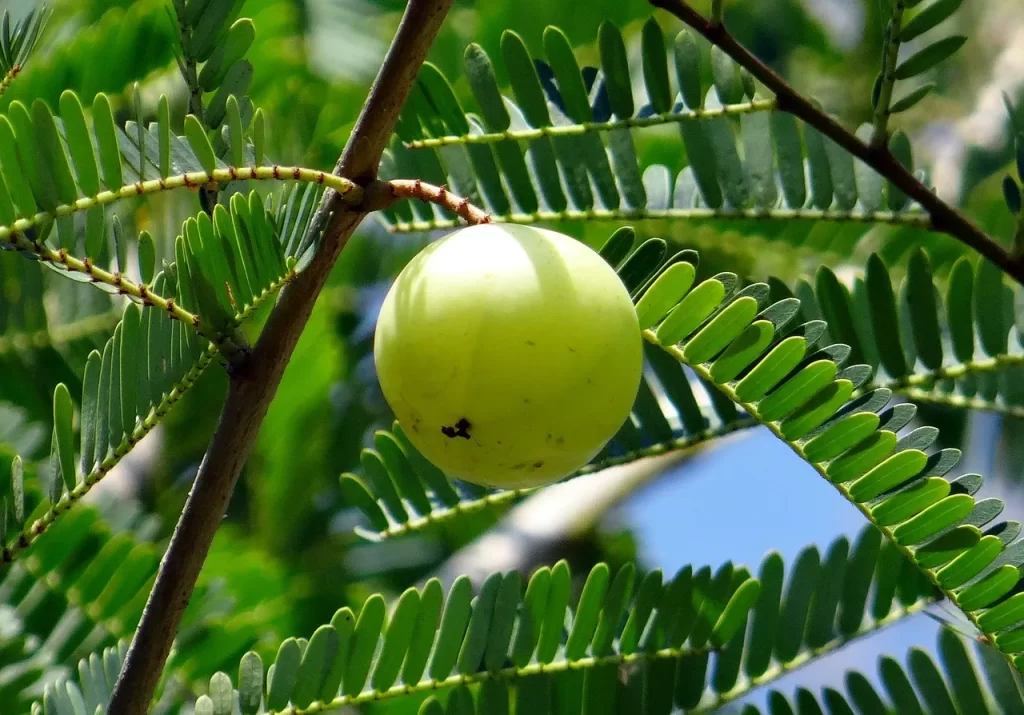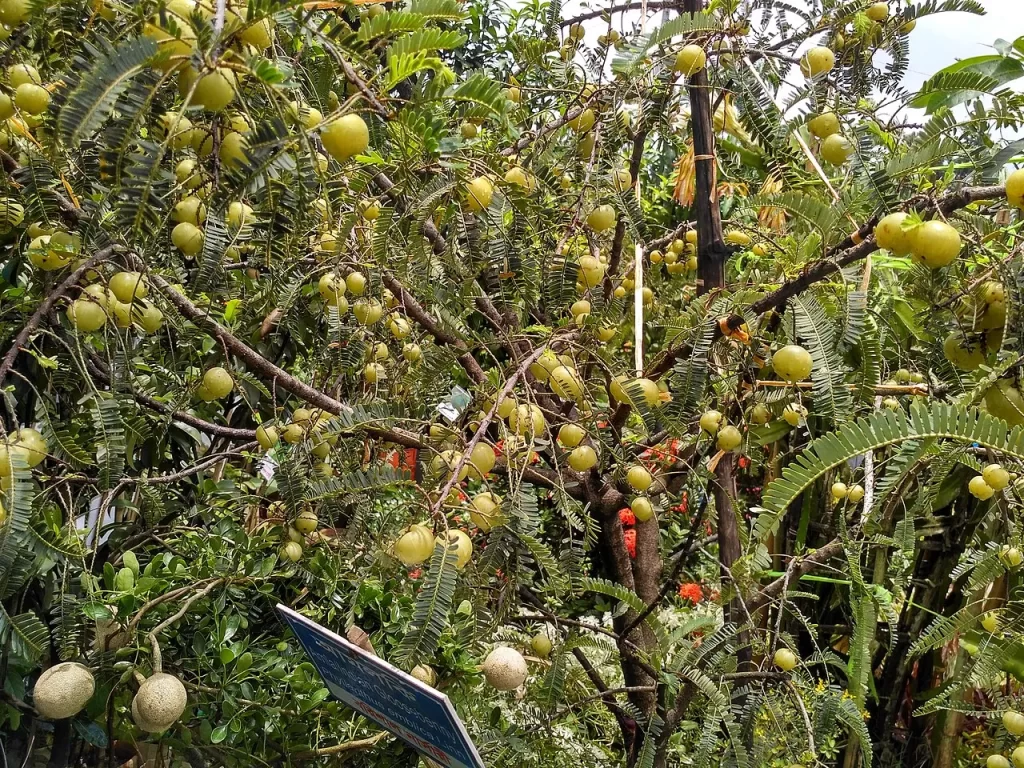Amla or Indian gooseberry (Phyllanthus emblica), is a profitable crop for farming due to its long life, low maintenance requirements, and high medicinal value. This significant crop is rich in vitamin C and used as a liver tonic. Amla’s therapeutic properties come from its concentration of vitamin C and other minerals like thiamine, niacin, and dietary fiber.
Although raw amla consumption is popular in India, it is typically processed before consumption through sun drying or treating with sugar. Dried fruits are used to treat various ailments such as fevers and coughs. The fruit possesses antibiotic properties along with immune system-boosting capabilities.

Almost 90% of the plant can be utilized to treat diseases. Ayurvedic medicines today still utilize all parts, including leaves, bark, fruits, and roots. There is high demand for amla-based health care products like hair oils and face creams within industries producing herbal medicinal products. Availability can be limited since it’s a perennial crop.
Amla is a branching deciduous tree that typically grows 10 to 20 meters tall with glabrous branches and a crooked trunk. It has greenish-yellow flowers and spherical fruits that are pale yellow in color, measuring approximately 1.5 cm in diameter.

This hardy tree thrives in dry climates and tolerates alkaline and saline conditions, making it easy to grow with minimal upkeep. As a result, Amla farming offers high rewards for farmers who follow proper orchard management practices. Although naturally found in Southeast Asia, South America, and Europe, increasing demand for Amla has led to its cultivation expansion worldwide.
India, being the primary cultivator of Amla due to its favorable growing conditions, has been the major exporter due to its large production capacity. Uttar Pradesh, Madhya Pradesh, and Tamil Nadu lead the nation’s cultivation efforts.
Different Varieties of Amla
Farmers popularly cultivate Amla, which is available in various varieties such as Banarsi, Francis, Chakaiya, Kanchan (NA-4), Krishna (NA-5), Narendra-6 (NA-6), Narendra-7 (NA-7), Narendra-9 (NA-9), Narendra-10 (NA-10), and BSR1. The choice of cultivars depends on the region with specific improved hybrid varieties for each area.
Popular cultivable varieties are Banarasi, Krishna and Chakaiya which are commonly grown in Rajasthan and Uttar Pradesh. Desi varieties suit specific regions but have lower yield and smaller fruit sizes.
Champakkad Large found in Western Ghats is ideal for cultivation in Kerala producing large fruits. The Banarasi variety thrives well there, yielding berries weighing up to 38 grams that can be split into three parts.
Soil Selection
Amla trees thrive in dry regions with moderate alkaline soils, specifically loamy soil with good drainage and a pH of 6 to 8. They can also grow in sandy soils rich in organic matter, but not purely sandy or heavy soils with high water content. Deep, fertile soil promotes higher Amla production.
Before planting Amla, prepare the land by tilling well and adding plenty of organic compost. Create nursery beds measuring 15 cm by 15 cm and 2.5 cm deep for optimal growth conditions. Conduct a soil test for fertility before beginning commercial cultivation.
As a subtropical plant, Amla can tolerate dry climates as well as salinity and alkalinity. For successful cultivation, dig pits of 60 to 75 cubic meters at a spacing of six meters apart and plant during the monsoon season.
Climatic Condition
Amla grows in regions with an annual rainfall of 600-800 mm and requires a warm climate with temperatures between 20°-30° C. Amla trees need protection from hot winds and frost during their early growth stages. Mature plants can withstand freezing temperatures and high temperatures up to 45° C.
Ideal cultivation areas should be free from frost during flowering and fruiting seasons. Suited for subtropical and tropical climates, Amla prefers soil rich in organic matter with at least 50 cm of annual rainfall.
Essential Nutrients and Fertilization
Amla trees yields better when the soil contains essential nutrients such as nitrogen, phosphorus, potash, zinc, manganese, and boron. Nitrogen supports vegetative growth while phosphorus enhances fruit retention, and vitamin C content. Potash also improves fruit retention and quality.

Young amla plants need 15 to 20 kg of farmyard manure annually while mature trees require 30 to 40 kg between September and October. Irrigation of the plants is necessary after applying fertilizers and manures. Organic fertilizers like cow dung/urine/mulch rich in nitrogen and phosphorus are particularly beneficial and provide optimal nourishment for amla trees. During the growing season, one should fertilize Indian gooseberries every few weeks as they are heavy feeders.
Irrigation Guidelines
During summer and critical stages of flowering and fruit bearing, young plants require watering at two-week intervals, while it is not necessary during winter and rainy seasons. The first watering should occur after applying manure and fertilizer but it should be avoided during the flowering stage.
Drip irrigation is an efficient method for water utilization, fertigation, and weed control. Experts do not recommend drip irrigation in rain-fed areas.
Initial irrigation helps establish the plants, after which infrequent irrigation suffices. Once the trees reach a height of 5-6 meters, they meet their own watering needs. Protective irrigation during drought phases from November to May benefits young plants. However, this practice becomes unnecessary after 4-5 years of planting.
Pruning and Mulching
Amra farmers essentially prune amla trees in late winter or early spring before new growth starts by removing dead or diseased wood and trimming the remaining branches. Removal of dead, weak, and crisscrossing branches, leaving only four to five healthy ones with wide angles stimulates new growth and allows light and air into the center.
In summer, experts recommend mulching with paddy straw or wheat straw around the base of the tree up to 15-20 centimeters from the trunk. Mulching helps conserve water and control weeds. Frequent weeding keeps the area free of weeds for healthy tree growth and orchard maintenance. Regular weeding and hoeing are essential for optimal results.
Himalayan Florica can offer you end-to-end support for farming, right from training workers to supply of high-yielding plant varieties, propagation, harvesting, and guide you through the entire crop lifecycle. Please drop us an email at himalayanflorica.slg@gmail.com to connect with us.


Agriform
Informative read on amla farming. Valuable insights for aspiring farmers. Excited to implement these tips in my own orchard. Thanks!